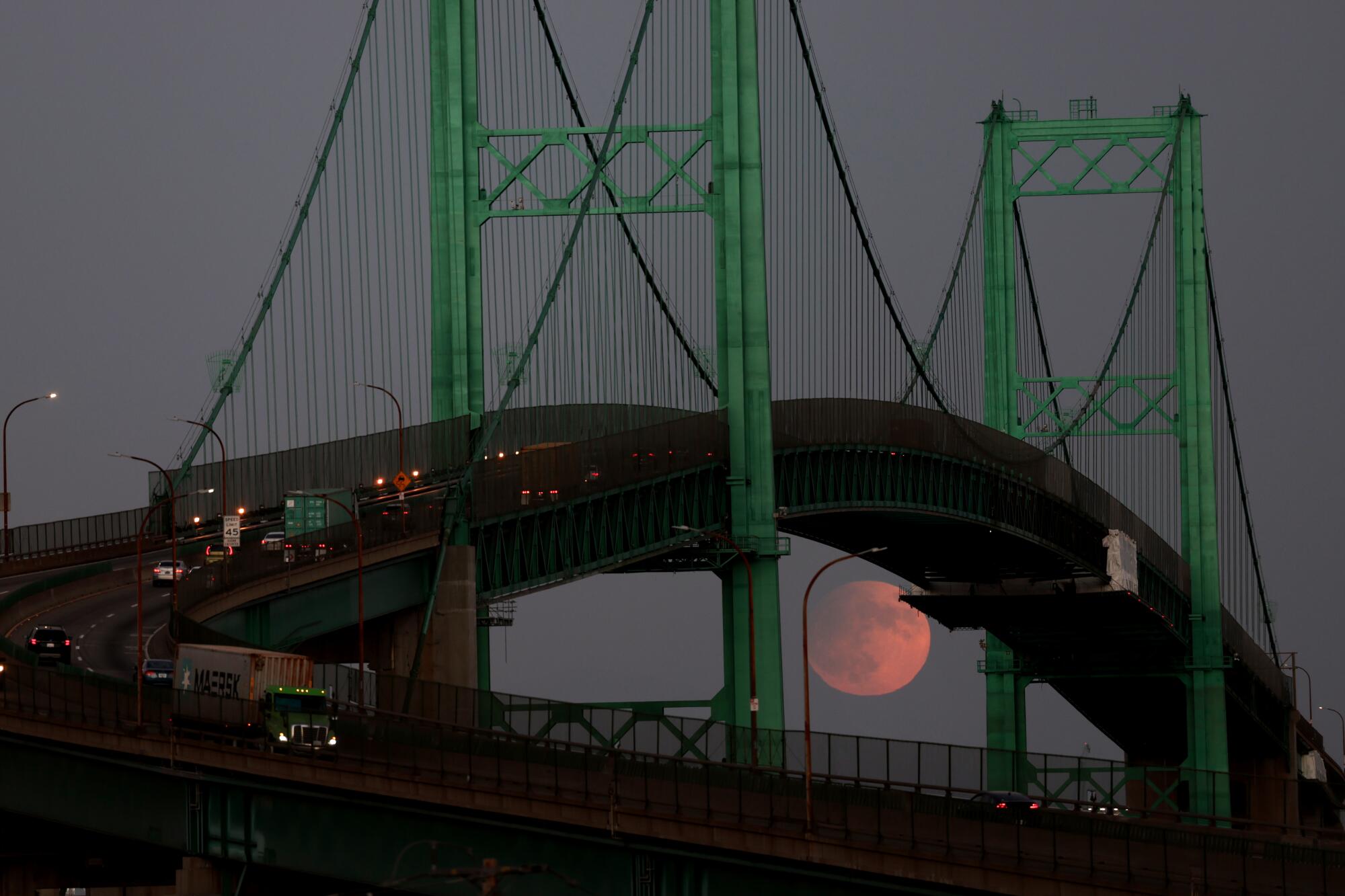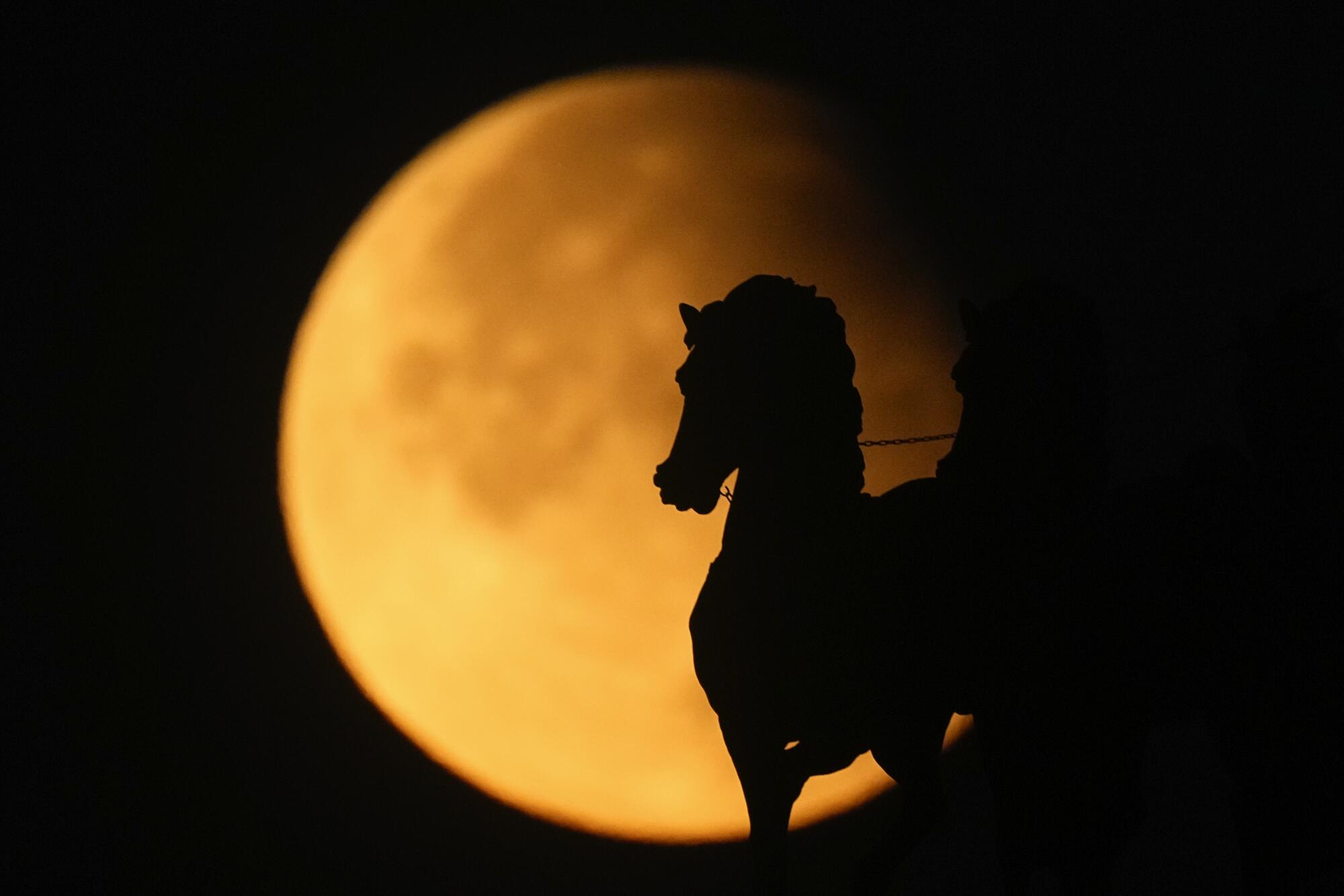
The moon is seen over the Vincent Thomas Bridge in San Pedro on Tuesday night.
(Wally Skalij/Los Angeles Times)

The skies lighted up Tuesday night with a double lunar phenomenon: the harvest supermoon and a partial lunar eclipse.
Supermoons are full moons that appear larger because they happen roughly in tandem with the lunar orbit’s closest approach to Earth, known as perigee.
According to NASA, that means the moon looked 30% brighter and 14% larger than when the moon’s orbit is at its furthest from us, or apogee.
Tuesday’s supermoon was a harvest supermoon because it was the full moon that appeared closest to the fall equinox. The name goes back hundreds of years, when farmers would sometimes use the moon’s light to work later in the evening.
But bright skies were not the only sight viewers may have noticed.

A horse statue is silhouetted against the moon during a partial eclipse early Wednesday in Moscow.
(Pavel Bednyakov / Associated Press)
The full moon — the second in four consecutive months of supermoons — coincided with a partial lunar eclipse. A lunar eclipse happens when the Earth passes between the sun and the moon and casts a shadow on the moon.
In this case, about 3.5% of the moon appeared darkened by the Earth’s umbra, a term that describes the darkest segment of the Earth’s shadow.
Unlike with the solar eclipse in April, no special glasses are necessary to safely look at a lunar eclipse.
In Southern California, the moon rose at 6:52 p.m. The Earth’s biggest bite appeared at 7:44 p.m. and gradually dissipated over 31 minutes. By 9:48 p.m., the moon was at its brightest.
Tuesday’s moon followed the Aug. 19 super blue moon. A blue moon does not describe the color of the moon; instead, it refers to the third full moon occurring in a season with four full moons.
Experts tend to consider supermoons as those that fall within 90% of the moon’s closest approach to Earth.
The August supermoon was about 224,000 miles from Earth. This month’s was a little closer: 222,000 miles away.
The next supermoons are Oct. 17 and Nov. 15.
More to Read

Jaweed Kaleem is an education reporter at the Los Angeles Times, where he covers news and features on K-12 and higher education. He specializes in reporting on campus activism and culture, including issues on free speech, religion, race and politics. Kaleem previously worked for The Times as a Los Angeles-based national correspondent and a London-based foreign correspondent.
More From the Los Angeles Times
Most Read in California





